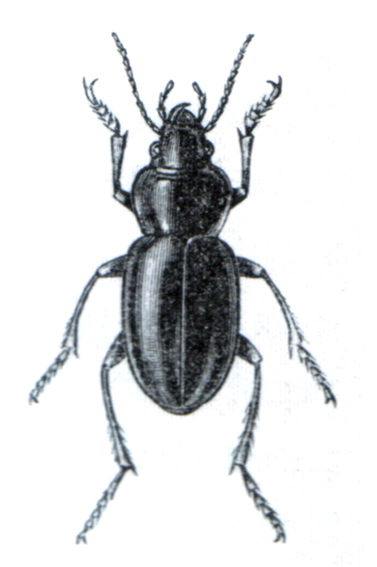Subgenus Carabophanus Kolbe, 1895
Carabophanus Kolbe, 1895:57 (type caraboides Raffray, 1882 = raffrayi Farmaire, 1883)
Calister Reitter, 1896:41 (type raffrayi Farmaire, 1883)
Jeannel (1940: 64), gathers the species of African mountain wingless Calosoma in three genera (or sub-genera in our interpretation), namely Carabops, Orinodromus and Carabomorphus.
All the species gathered in these groups have wings non-functional or reduced to a stump. As a consequent they at first glance differ from the other winged Calosoma which could be related to them, because they have the rear angles of the pronotum well developed and the elytral humeri attenuated, lacking any indentation on their margin.
In the genus Orinodromus are put togheter, because of their morphological characteristics, some species more advanced than those in Carabops, still having strigose mandibules. However in the same time these species are less advanced than those in Carabomorphus, that are instead characterized by the hypertrofic development of the ligule. In fact all the species that Jeannel included in Orinodromus have smooth mandibles, and their metaepisterna are reduced and without punctation, while the inner armature of their penis has a normally formed ligule, as in Carabops, although relatively larger.
Inside Orinodromus, all the species of the plateau of Ethiopia have in common some more characteristics, which led to the creation of the subgenre Carabophanus: the ligule short, wide, triangular not elongated and with rounded apex, the male's mesotibiae strongly arched and with a side brush, the rear lobes of the pronotum small but easily visible, without setae.
These characteristics and in particular the archaic one of the chaetotaxy of the mesotibiae questioned Jeannel about the systematic placement of this group of species, which on the other hand, because of the shape of the ligule, would seem that it could be brought closer to the Carabops subgenus.
Anyway Jeannel (1940: 64) believed that the origin of all the genera or sub-genera of African mountain wingless Calosoma should be traced back to, to the Castrida - Caminara phyletic line, and they should be derived from an ancestor belonging to Campalita – Caminara groups.
As regards Carabophanus these hypotheses would be at least partially questioned by the results of mitochondrial analysis which would seem to indicate a different origin and phylogenetic history than that of the other groups (Toussaint and Gillet, 2017: 10).
For these reasons, given the peculiarities of the morphology and the contradictory nature of the phylogenetic hypotheses, it seems justified to maintain for the moment, pending further researches, the Carabophanus subgenus distinct from Orinodromus.
